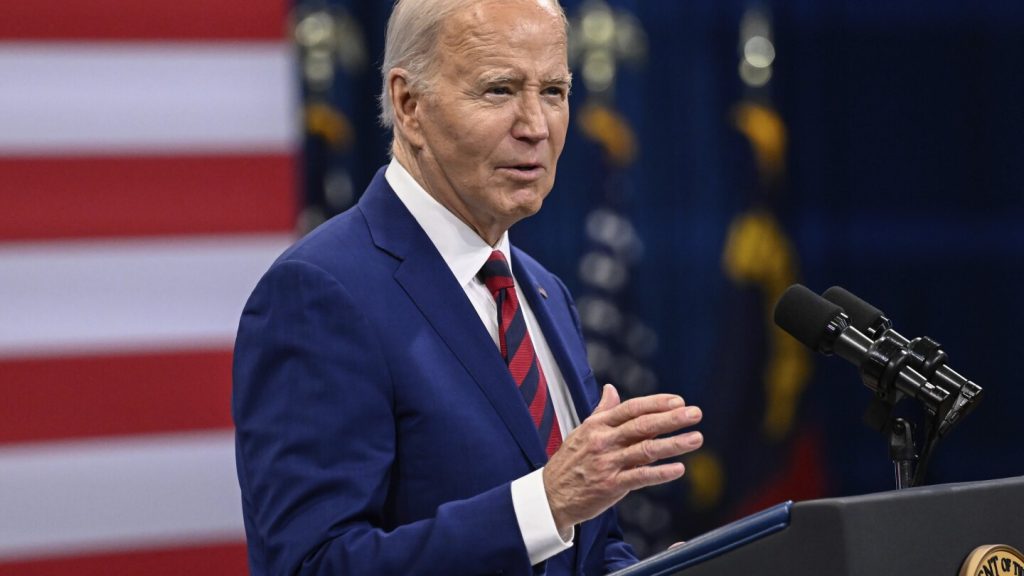In a recent announcement, the North Dakota Democratic Party revealed that President Joe Biden emerged victorious in the state’s Democratic presidential primary. The primary, conducted mostly through mail-in ballots, saw the distribution of ballots to voters starting in February. Despite the presence of seven other candidates on the primary ballot, Biden’s win was almost a certainty. Meanwhile, former President Donald Trump secured a win in the North Dakota Republican Party’s presidential caucuses on March 4, obtaining all 29 delegates available. Both Biden and Trump have already amassed enough delegates to secure their respective party nominations, setting the stage for a presidential rematch election, a rare occurrence that hasn’t happened since 1956. It’s worth noting that Sen. Bernie Sanders claimed victory in the North Dakota Democratic caucuses in both 2016 and 2020.
The North Dakota Democratic primary results come at a time when the political landscape in the United States is being closely watched. With the upcoming presidential election gaining momentum, every victory and defeat in the primaries holds significance. President Joe Biden’s win in North Dakota adds to his tally of delegates, further solidifying his position as the Democratic nominee. The predominantly mail-in nature of the primary also sheds light on the evolving dynamics of electoral processes in response to the ongoing COVID-19 pandemic. Despite the challenges posed by the pandemic, voters in North Dakota were able to participate in the primary and have their voices heard in the selection of the Democratic presidential candidate.
On the Republican side, former President Donald Trump’s dominance in the North Dakota Republican Party’s caucuses reaffirms his stronghold within the party. By clinching all 29 delegates, Trump continues to exhibit his widespread support among Republican voters. As the incumbent president, Trump’s focus on securing his party’s nomination reflects his intent to secure re-election in the upcoming presidential race. The contrast between the Democratic and Republican primary outcomes in North Dakota underscores the deep political divide in the state and the nation as a whole. With both Biden and Trump solidifying their positions as the respective party nominees, the stage is set for a heated electoral battle in the months ahead.
The prospect of a presidential rematch election between Joe Biden and Donald Trump, the first since 1956, adds an intriguing element to the unfolding political narrative. As the two major party nominees, Biden and Trump will face off in what is expected to be a closely contested race. The starkly different ideologies and policy agendas of the two candidates promise to make the upcoming election one of the most consequential in recent history. With the COVID-19 pandemic, economic recovery, racial justice, and other pressing issues at the forefront of national discourse, the American electorate faces a critical decision in determining the future trajectory of the country. The results of the North Dakota primaries serve as a microcosm of the broader political landscape, offering a glimpse into the dynamics that will shape the outcome of the presidential election.
Sen. Bernie Sanders’ victories in the North Dakota Democratic caucuses in both 2016 and 2020 underscore his enduring influence within the party and the progressive movement. Despite not emerging as the Democratic nominee, Sanders’ impact on shaping the party’s platform and mobilizing grassroots support cannot be understated. As the election season progresses, Sanders’ role in galvanizing progressive voters and advancing key policy priorities will remain significant. The diversity of candidates and perspectives represented in the primary process reflects the complexities and nuances of American politics, highlighting the multifaceted nature of voter preferences and party dynamics. As the focus shifts towards the general election, the outcomes of the primaries in states like North Dakota will contribute to shaping the broader narrative of the electoral landscape and the choices facing American voters.


